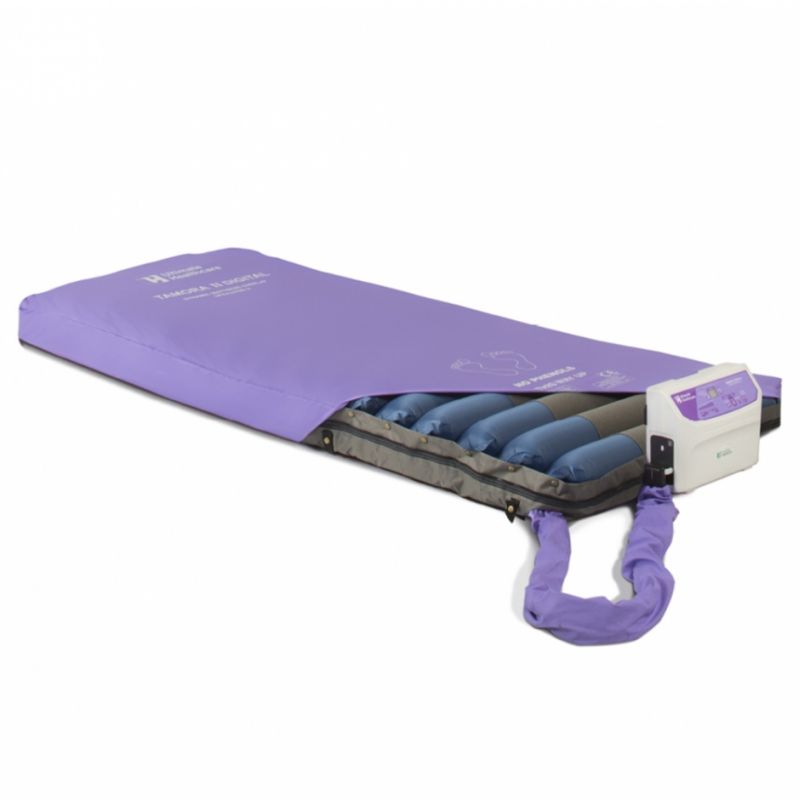How to Choose Your Pressure Relief Mattress10 July 2018 | Eugene If you or a loved one are currently bedbound or suffering from mobility issues, you are no doubt spending a great deal of time in a bed or chair. While this is unavoidable during recovery, it can present its own risks, as long stretches of time lying down can put you at risk of developing pressure sores. If this is the case, you may be in need of a pressure relief mattress to provide you with comfort and reduce your risk level, but choosing the right mattress is easier said than done. Pressure relief mattresses come in all sizes, types and relief levels, so you'll need to know what you're looking for before you can make the right selection. At HospitalBeds.co.uk, we're here to help, and we've put together a short list of things to look out for when buying your pressure relief mattress. We'll start with the basics and lay out the main types of mattresses you'll be choosing between. What Causes Pressure Ulcers?To understand why a pressure relief mattress may be necessary, it's important to understand exactly how pressure ulcers, or pressure sores, develop. Pressure ulcers are damaged areas of the skin and tissue that arise on areas of the body that experience a high level of pressure, shear or friction on the skin. They will most likely develop on areas of skin over bony prominences, such as the heels, hips, shoulder and buttocks. Which Type of Pressure Relief Mattress Should I Choose?Pressure relief mattresses are divided into three main types: Static Foam Mattress, Alternating Air Mattresses, and Hybrid Mattresses. Static Foam MattressesThese mattresses are often the most basic, but can still provide excellent pressure relief to lower risk patients. Often made from viscoelastic or 'memory foam', these mattresses help to distribute the user's weight so that no area experiences especially high pressure. They can often feature castellated cuts, allowing the surface to move with the user's skin to minimise shear. Alternating Air MattressesAlso called 'active' or 'dynamic', these mattresses are usually for patients with more significant pressure sore risk, such as those with greatly restricted mobility, the elderly or those with underlying conditions. Made up of a series of air cells, these mattresses are connected to a pump that pushes air through the cells, causing the cells to alternate pressure areas around a user's body. This will ensure pressure is dispersed, while helping to promote blood circulation by mimicking movement around the user's body. Hybrid MattressesAs the name suggests, these mattresses use a combination of the other two pressure-relieving materials to provide a unique combination of support and pressure distribution. These mattresses are often for those at very high pressure sore risk, and will feature specialised alternating or foam sections under especially high risk zones. Mattress Replacement or Mattress Overlay?These terms will often show up in product names, and refer to whether or not the mattress can stand alone. All three mattress types above can be classified as either an overlay or replacement. Mattress Replacement SystemsThese mattresses are designed to fully 'replace' your current mattress. They can be placed directly on your existing bed or a profiling bed, and require no underlay mattress to be placed underneath, and no overlay to be placed on top. They will usually include a multi-layer construction, with a dense foam layer on the bottom to provide support. Mattress OverlaysThese are mattresses that cannot be used alone, and require an underlying mattress or mattress underlay to be used beneath them. They will often consist of one or two layers of foam or air cells, and can transform your current mattress into a powerful pressure relief system, without having to bear the cost of a full mattress replacement system. Which Pressure Relief Level Do I Need?When browsing pressure relief mattresses, you will no doubt come across mattresses being described as suitable for 'low risk', 'medium risk', 'high risk' or 'very high risk' users. This designation is based on a number of risk factors, as well as the results of a skin assessment carried out by a healthcare professional based on the Braden or Waterlow scale, or a more advanced pressure mapping technique. If skin is deemed to show signs of pressure sore development, a high, or very high risk mattress will most likely be required. Here, we'll provide an example of a suitable mattress choice for each of the four commonly used pressure sore risk levels. Low Risk - Alerta Bubble Alternating Air Mattress Overlay System
Medium Risk - Harvest Community Plus Pressure Relief Foam Mattress
High Risk - Tamora II Digital Alternating Pressure Relief Mattress Overlay
Very High Risk - Sidhil Athena Dynamic Low Airloss Pressure Relief MattressFor the patients at the highest pressure sore risk, including palliative care and pain management environments, low airloss mattresses are an ideal choice. These mattresses use immersion therapy to minimise movement, which can be uncomfortable for some highly vulnerable patients. The Sidhil Athena Dynamic Low Airloss Pressure Relief Mattress uses this principle to be suitable for those with severe pressure ulcers up to level 4, and includes microclimate control and a range of safety features to make it as safe and capable as possible. Choose Your Mattress CarefullyThese are some reliable mattresses from trusted names, but choosing the correct pressure relief mattress should not be taken lightly. You should always consult with your healthcare professional to ascertain the features and specifications of the mattress you need, and ensure your choice meets all of your needs. The correct pressure relief mattress can make recovery and treatment simple and efficient, while an incorrect choice could end up exacerbating pressure sore risk and hurting the recovery process. Do you have any questions, or would you like a recommendation? Please don't hesitate to contact our Customer Care Team at 020 7501 0592 or leave us a message in the comments section below.
|
 (1).jpg)
.jpg)

.jpg)


